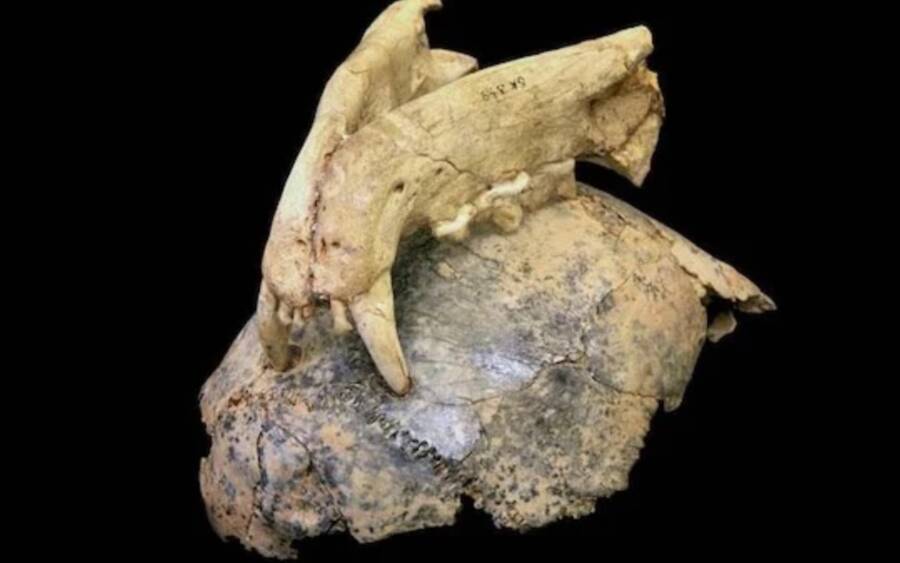Researchers Just Analyzed The Ravaged Remains Of 1.8-Million-Year-Old Human Ancestors With AI And Revealed They Were Eaten By Leopards
Manuel Domnguez-RodrigoResearchers found evidence that two Homo habilis individuals were killed and devoured by leopards.While studying the remains of two prehistoric Homo habilis individuals from present-day Tanzania, researchers determined that they were attacked by a large carnivore nearly 2 million years ago. But for a long time, they didnt know what type of carnivore made the kill. Now, however, experts have used AI to determine the exact predator that consumed our unlucky human ancestors. The culprit, they say, was a leopard.Not only did the animal leave deep marks in the individuals skulls, but the fact that they were eaten by a leopard also speaks to how long it took for our human ancestors to become predators, and not merely prey.How AI Tools Led Researchers To A LeopardAccording to a study published in the Annals of the New York Academy of Sciences, the remains of the two Homo habilis individuals were originally found in 1960, at the Olduvai Gorge site in Tanzania. Something had clearly consumed the two individuals a juvenile and an adult but what?Manuel Domnguez-RodrigoTeeth marks on the skull remains clearly showed that something had bitten the two Homo habilis individuals.To find out, a team led by Rice Universitys visiting professor of anthropology Manuel Domnguez-Rodrigo used AI. They trained deep learning models to identify and distinguish bone marks left by a variety of predators, including leopards, lions, hyenas, crocodiles, and wolves, in hopes of finally identifying the animal that had attacked the two Homo habilis individuals, one of whom lived about 1.8 million years ago and the other of whom lived 1.85 million years ago. After examining the Homo habilis remains, the models gave the researchers an answer. It predicted with high confidence that the marks on the individuals bones were from leopard bites. Human experts have been good at finding modifications on prehistoric bones, Domnguez-Rodrigo remarked in a Rice University statement. But there were too many carnivores at that time. AI has opened new doors of understanding Its pushing methods that have been stable for 40 years beyond what we imagined. For the first time, we can pinpoint not just that these humans were eaten but by whom.Domnguez-Rodrigo and his team believe that the two Homo habilis individuals were both killed and eaten by the leopards, since leopards are unlikely to scavenge after another predator makes a kill. Vegara-Riquelme et al., 2025The jawbone of the juvenile Homo habilis, which has tooth marks left by a leopard. Their research is an astounding example of how scientists can use AI tools to peel back secrets of the prehistoric past. And it also tells us something about how our human ancestors fit into an ancient ecosystem. What The Leopard Attack Tells Us About Our Human AncestorsFor Domnguez-Rodrigo, the discovery of the leopard attack is about more than just AI. He and his team are looking to better understand how early humans evolved. Its long been believed that Homo habilis was the first to use stone tools and eat meat, but his findings have challenged this theory. Scotto Solomon, Rice UniversityManuel Domnguez-Rodrigo working in East Africa.Namely, it suggests that another human species living at the time, Homo erectus, may have been in the dominant predatory role. Perhaps Homo erectus, not Homo habilis, was eating meat and making tools, since Homo habilis was still seemingly prey for carnivorous animals. Or perhaps Homo habilis simply hadnt improved their early hunting techniques enough to play a predatory role.We discovered that these very early humans were eaten by other carnivores instead of mastering the landscape at that time, Domnguez-Rodrigo remarked. The beginning of the human brain doesnt mean we mastered everything immediately. This is a more complex story. These early humans, these Homo habilis, were not the ones responsible for that transformation.But AI, itself a part of the complex human story, may help researchers in their quest to better understand the prehistoric past. Having used AI tools successfully, Domnguez-Rodrigo is impressed with how deep learning models helped illuminate new insights about the lives of two unlucky Homo habilis individuals.Its extremely stimulating to be the first one to see something for the first time, he said. When you uncover sites that have been hidden from the human eye for more than 2 million years, youre contributing to how we reconstruct who we are. Its a privilege and very encouraging.Next, learn about some of Earths most incredible prehistoric animals. Or, go inside the fascinating and often misunderstood history of Neanderthals.The post Researchers Just Analyzed The Ravaged Remains Of 1.8-Million-Year-Old Human Ancestors With AI And Revealed They Were Eaten By Leopards appeared first on All That's Interesting.


